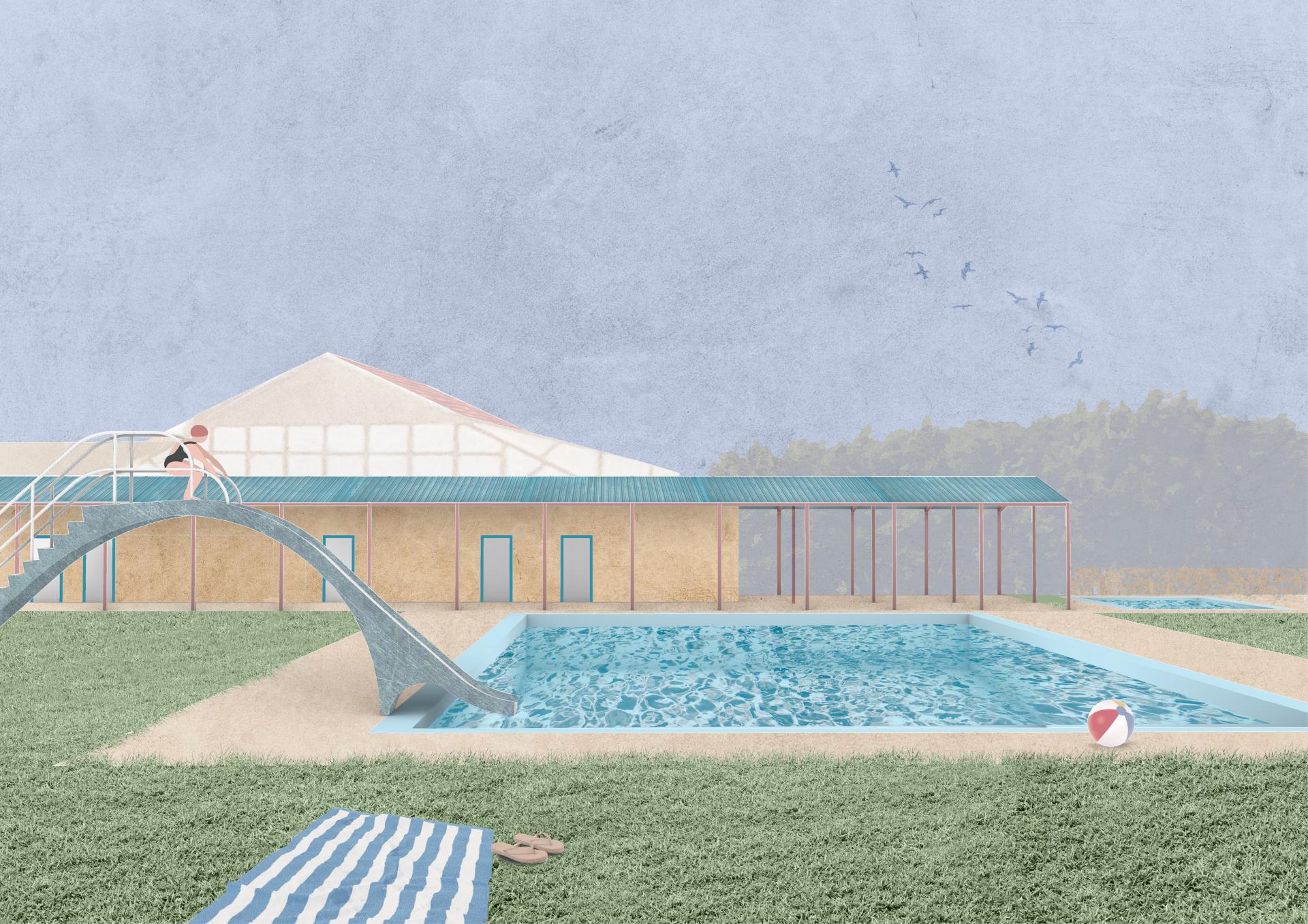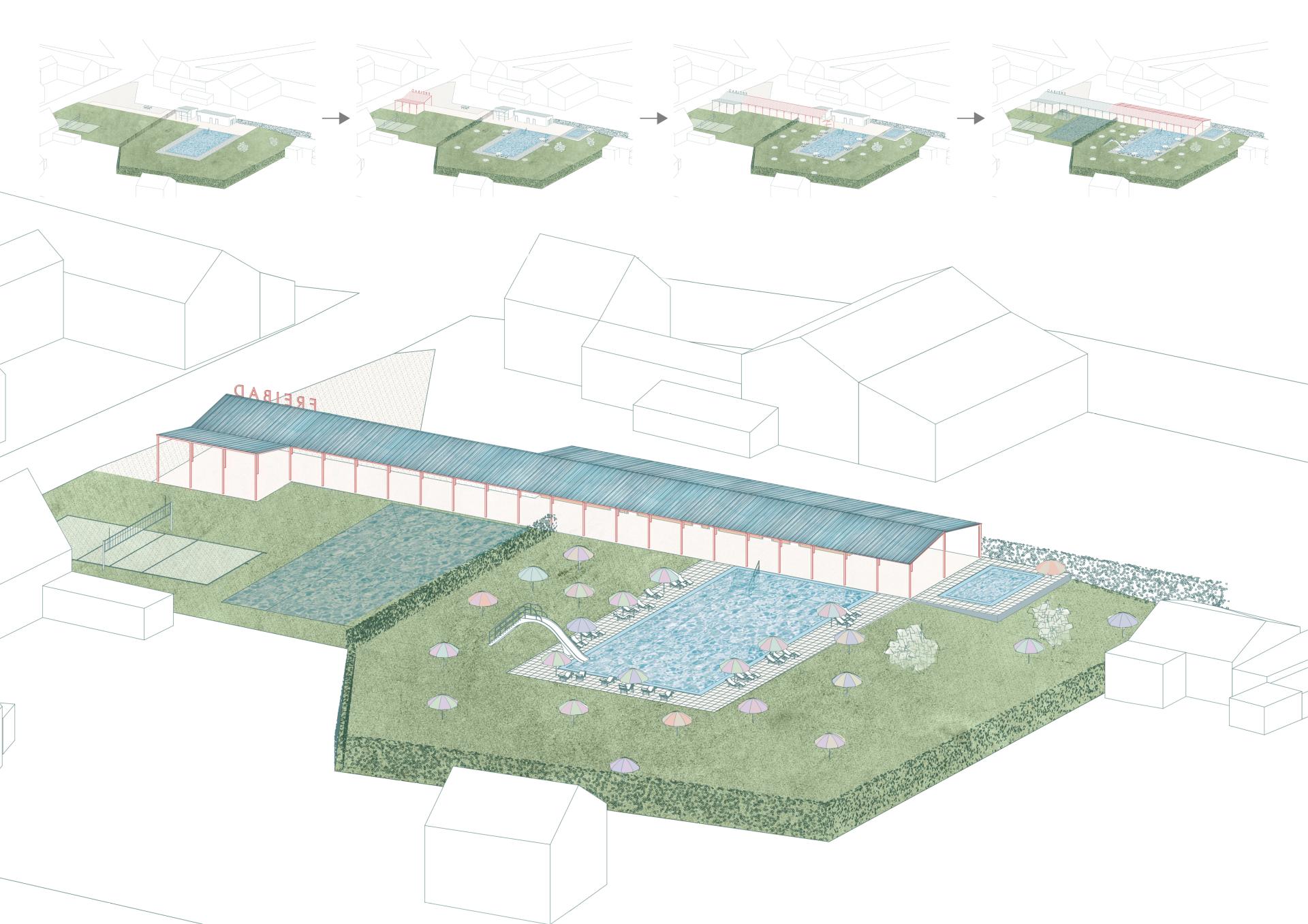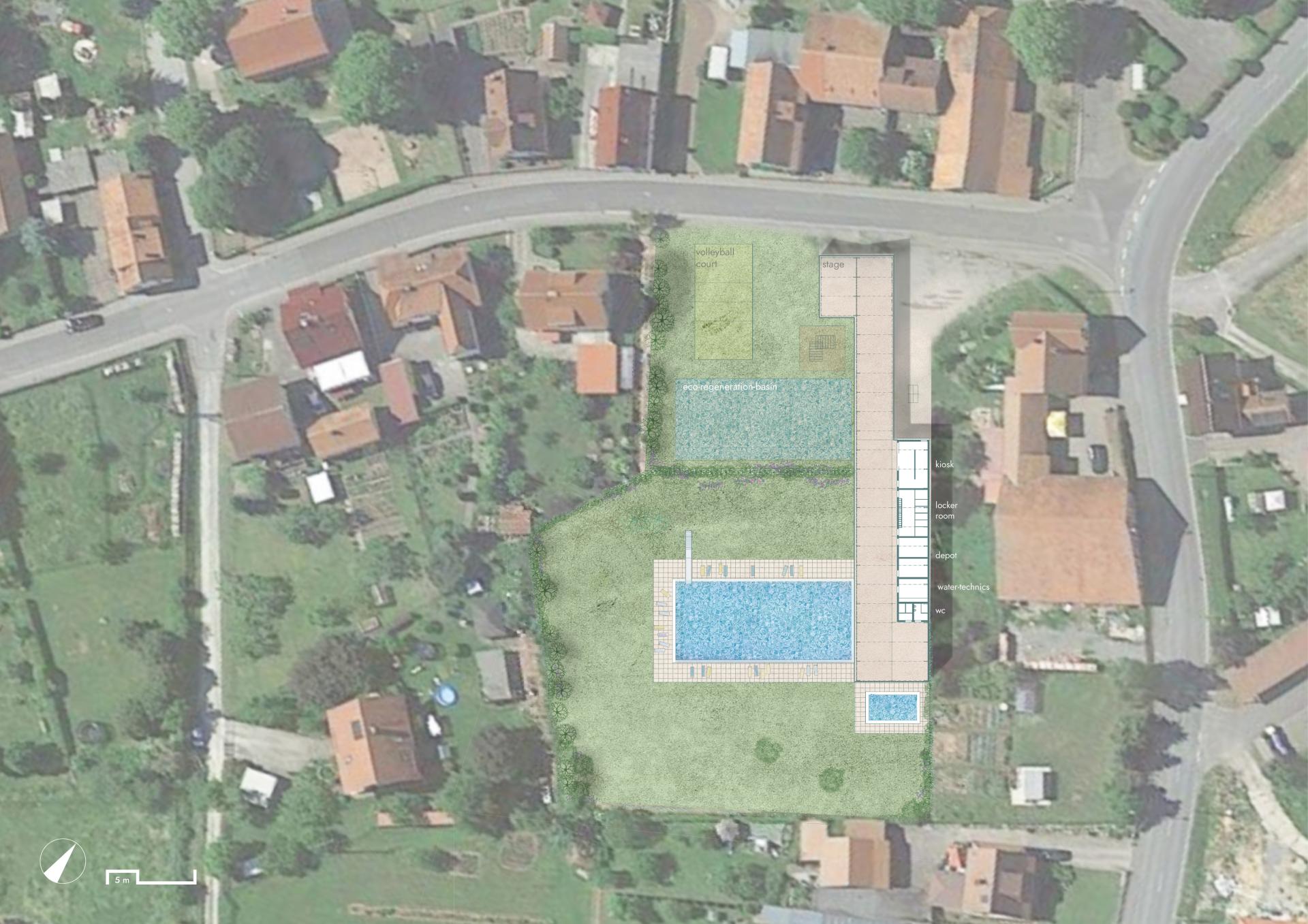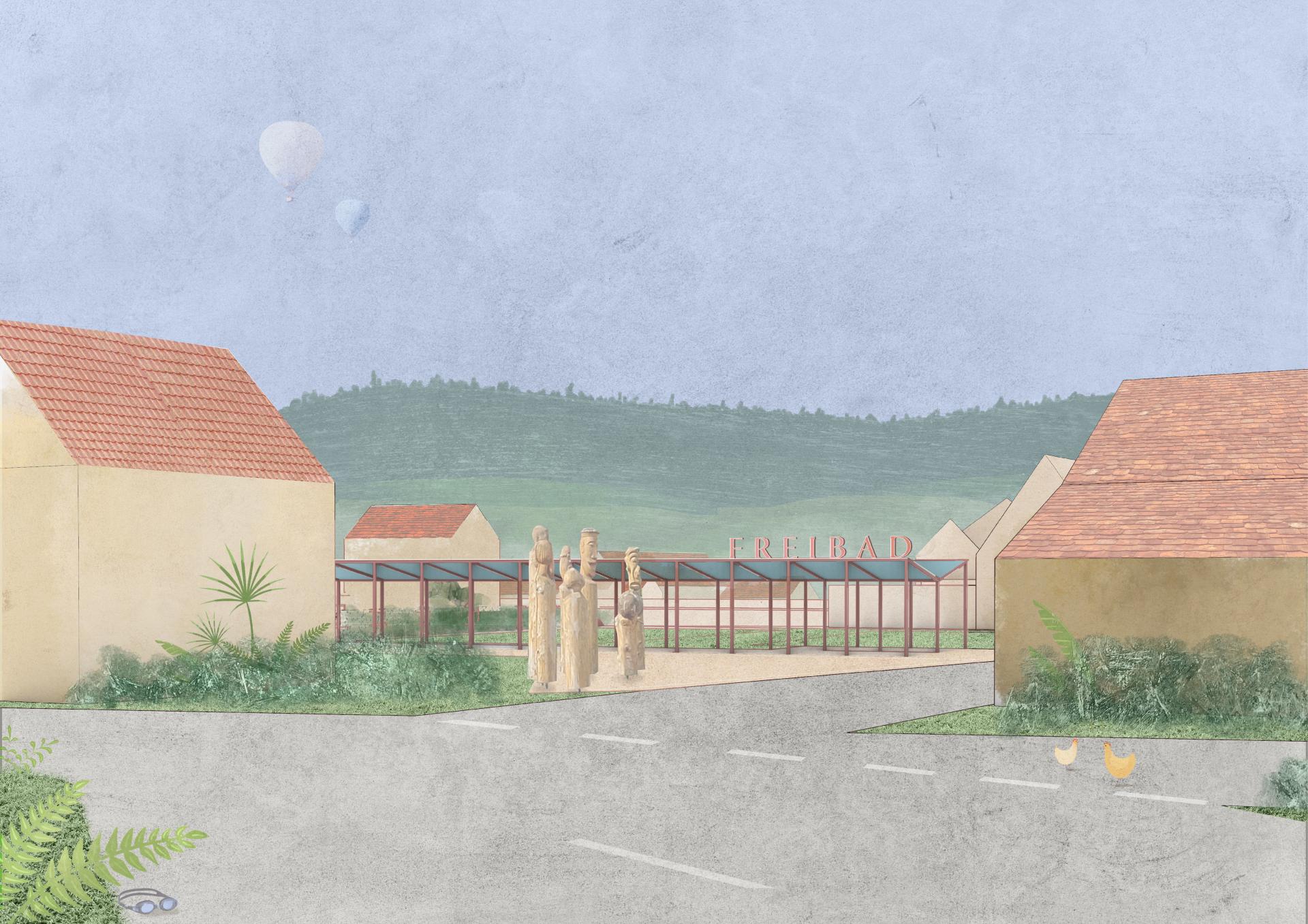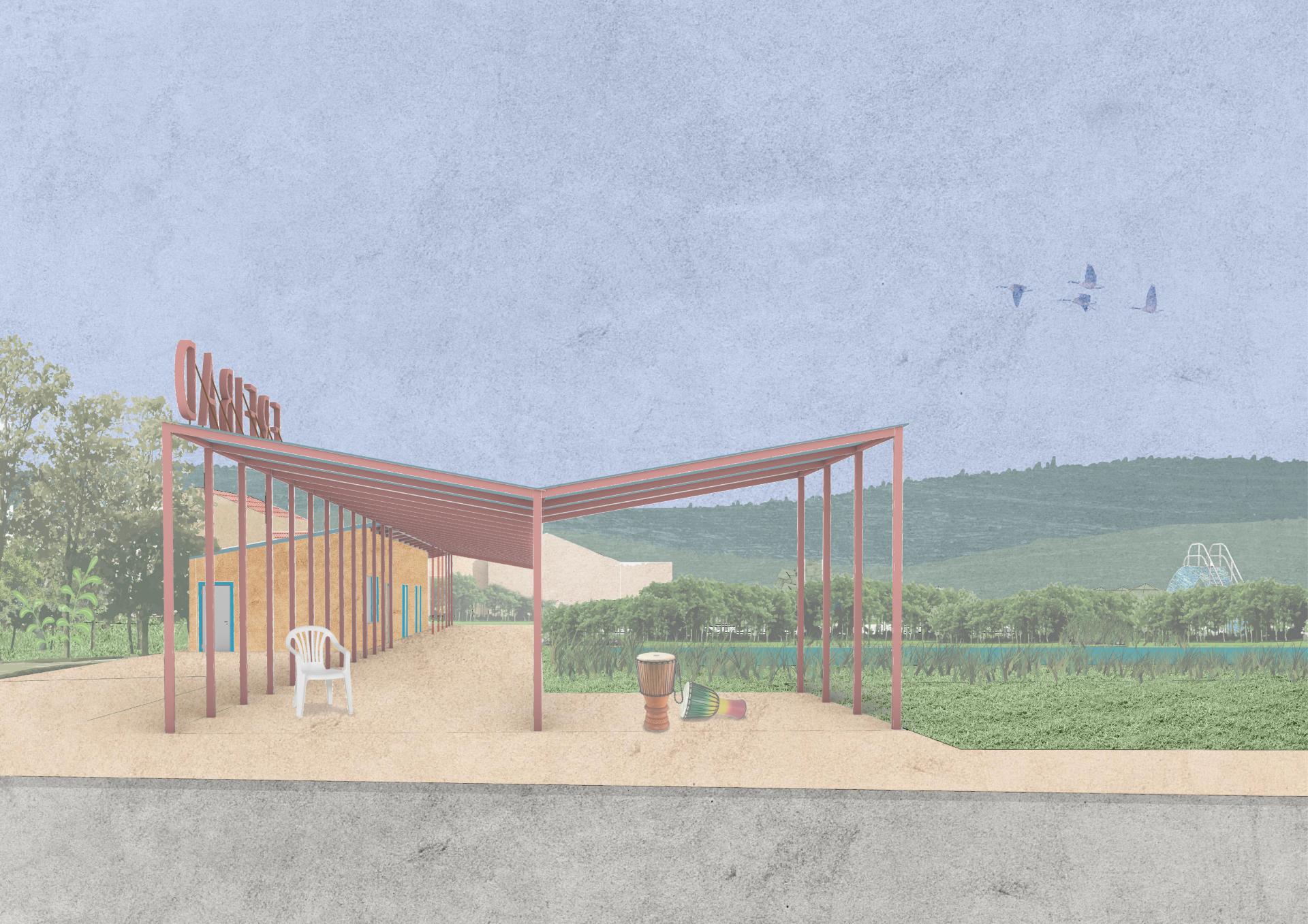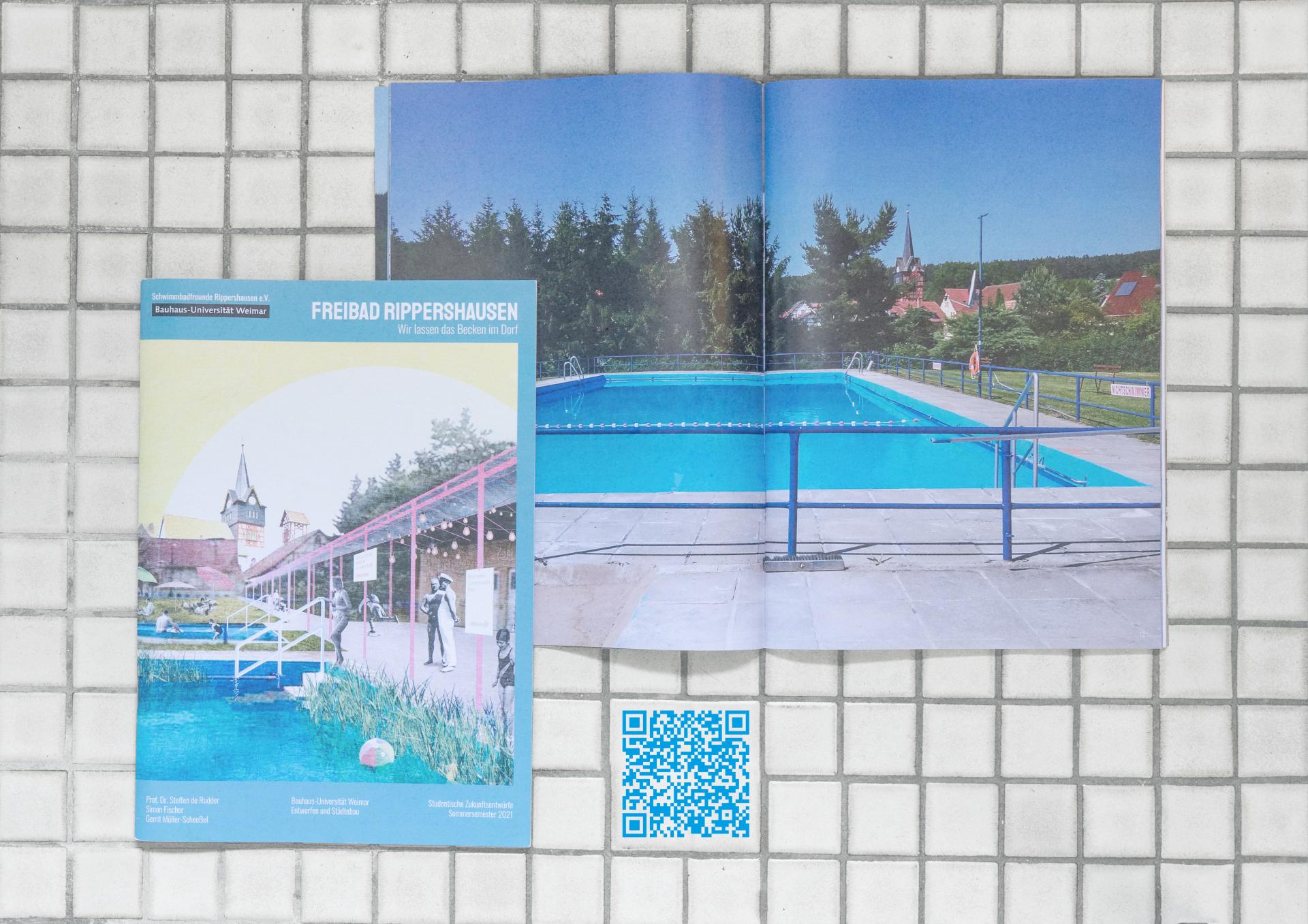POOLing local resources
Basic information
Project Title
Full project title
Category
Project Description
Public outdoor pools are as much a part of summer as ice cream and sunburn, the smell of chlorine and French fries. They are the most democratic of all places, offering spaces of encounter and community. Nevertheless, public pools are on the retreat, especially in rural areas. Rippershausen, a small village in Thuringia, is bucking this trend and has maintained its own swimming pool for 51 years. A structural and architectural redesign of the site is now to contribute to the further development.
Geographical Scope
Project Region
Urban or rural issues
Physical or other transformations
EU Programme or fund
Which funds
Description of the project
Summary
Outdoor pools are not just bathing and summer fun, they are outstanding places of community. They are also not a luxury - private pools are luxuries, outdoor pools, on the other hand, are public places where people who would otherwise never meet, face to face half-naked. Rippershausen, a small community in southern Thuringia has maintained its own outdoor pool for 51 years with a lot of voluntary work. As the only public place, it forms the social centre of the village in an otherwise disconnected region.
The pool, still from GDR times, is embedded in the village structure, surrounded by a spacious sunbathing lawn with a fantastic view of the surrounding hill ranges. It is rudimentary and unheated, but in summer it attracts people even from the next small town. In July, the “Kulturbiergarten” takes place here, a small festival where international artists meet Thuringian hospitality.
But that belies the need for action. In the history of the swimming pool, some things have been added, some things have been torn down and many things have only been repaired in a makeshift way. What was missing was an overall concept that recognised the potential of the open-air swimming pool and merged the necessary uses with the existing facilities. All of this had to be done with a low budget and a lot of voluntary work.
For this purpose, we developed a master plan in 2021 as a free student design together with initiatives and residents from Rippershausen. In close consultation with the local residents and the wishes of the open-air swimming pool association, three different designs culminated in a concept that is intended to serve as an impetus for the further development of the open-air swimming pool.
Key objectives for sustainability
Environmental sustainability played an important role in the design process from the very beginning. For us it seemed most sustainable to preserve as much as possible on the site and to continue to or re-use it. After all, every demolition and subsequent new building (even if it is only made of sustainable materials) causes avoidable emissions. Our aim was therefore to supplement the existing buildings at certain points and bring them together under one new roof. Wood was chosen as the material for the connected colonnade. The community of Rippershausen has its own forest, where the required resource can be cut from, avoiding long transport routes while also having the possibility to process the raw material on site in a sawmill. The modularity of the design not only enables serial assembly, but also an effective use of materials and a construction that can be easily repaired in the future. Depending on the available resources, a sectional realisation can also take place. We also advanced the concept of a self-cleaning natural pool. The water is not artificially treated with chemicals, but biologically. An additional basin with about the volume of the swimming pool is used for purification and is nothing more than a small ecosystem that forms biotic communities and regenerates itself independently. Through the inflow from the community's own spring, water would constantly pass through this biological filter. Together with the dirty water, a biofilm of bacteria, fungi and other microorganisms builds up there, which removes nutrients from the water and kills germs. The purified water is then of drinking water quality and can be pumped back into the pool. Toxic chlorine is not required, which not only reduces operating costs but also protects nature.
Key objectives for aesthetics and quality
We don't want architecture to be understood as something elitist that can only be found in sophisticated cities. The label architecture should also encompass the totally normal and profane. Even in the countryside, aesthetic architecture can be created with modest means that adapts to the existing structure without pandering to it. The concept in Rippershausen manages exactly this balancing act: the design attracts attention and thus draws attention to the otherwise rather inconspicuous swimming pool. The elongated colonnade gives the site a back and allows for individual appropriation. Individual buildings scattered around the site are transformed into a structure that integrates the existing buildings in its design and forms a homogeneous whole. At the same time, the design's reduced form intervenes only subtly in the landscape and draws on the formal language and materiality of the colourful half-timbered buildings of the village. The sloping roof, construction wood and friendly colours are the adopted elements, which are complemented by the technical joining and connecting possibilities of the present. The architecture is to be experienced as it is influenced and ultimately built by the local people themselves.
Key objectives for inclusion
As planners, we saw our task as mediators: It is easier for outsiders to discover hidden potentials and thus also to give the inhabitants a fresh look at everyday things. The resulting synergy includes all voices in the design process. The decision-maker, however, is the community with its residents. Initially, we kept the design process open and collected the wishes of the public pool association, the villagers and the community. From these partly different opinions we developed three different concepts.
Each of these variants responded differently to the outdoor pool in its form and use.
In the summer of 2021, the intermediate states were presented and discussed on site for the first time during the Kulturbiergarten. It cannot be denied that there were also dissenting voices and concerns from the population. The sense of upgrading the swimming pool area was questioned and the financing was seen as an insurmountable obstacle. But there was also joy that something was finally happening with the public pool. It is, after all, their swimming pool, their place to go on holiday on their doorstep and a social meeting place for everyone.
In order to raise awareness, we designed a large banner to inform people about the three concepts in a low-threshold way directly in front of the swimming pool. In late summer, everyone was able to post their opinions in a letterbox and vote for one of the options.
At another local meeting in Rippershausen in October, we emptied the letterbox in the presence of many interested citizens and decision-makers. We were pleased to receive a large number of notes, which were discussed together. Most of the voters wanted the third variant to be implemented, so that we could now enter into concrete planning.
In order to visualise the process and to present the project to possible sponsors, we designed a booklet at the end of the year that makes the progress and the goals visible. On the basis of this, we can reflect and move forward.
Physical or other transformations
Innovative character
The three dimensions of aesthetics, environmental sustainability and participation have been with us since the beginning of the design process. We understood them as interrelated elements that influenced each other.
The involvement of the inhabitants of Rippershausen was instrumental in shaping the aesthetic character of the concept. Their wishes, in combination with our design sense and the functional requirements, merged into initially three concepts, which were then democratically voted on.
The will to build in an ecologically sustainable way had a great influence on the materiality and form of the design. Sustainability was not a simple buzzword or greenwashing. We developed the concept with ecological sustainability in mind, rather than against it, and were always aware of the consequences of our actions.
The aesthetic design, in turn, was the basis for being able to discuss the concepts. It gave the design ideas a look and the function a shell. Even the normal, built with a low budget, should be allowed to have an aesthetic form that is detached from the contemporary mainstream.
Only through the combination of aesthetics, sustainability and inclusion does the concept offer the added value that we hope for the public pool of Rippershausen.

